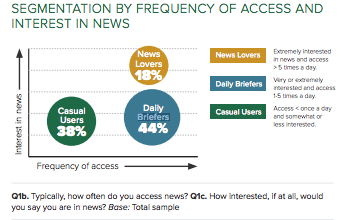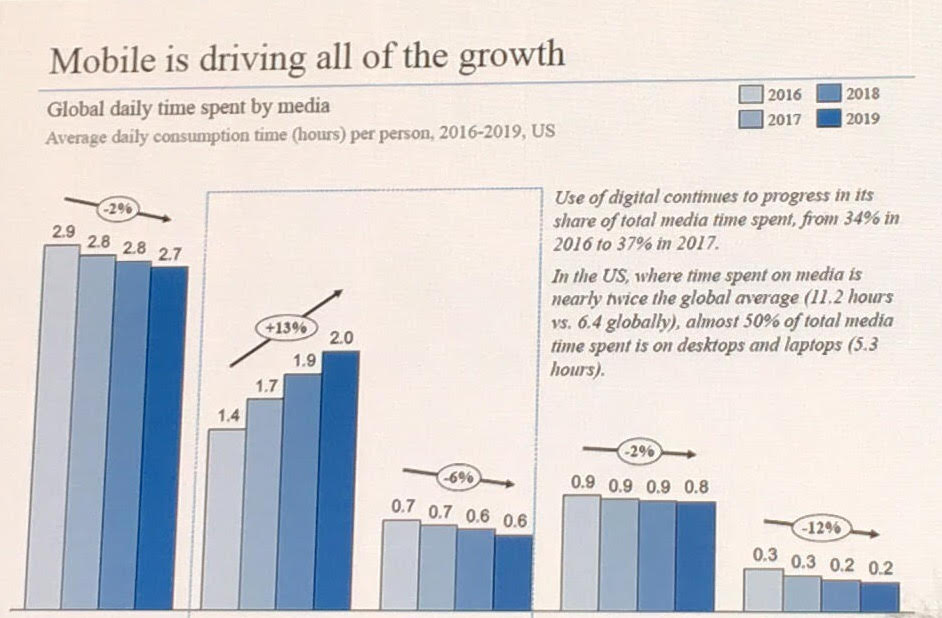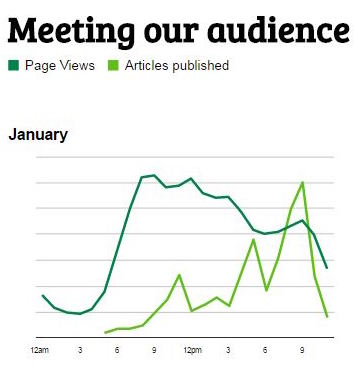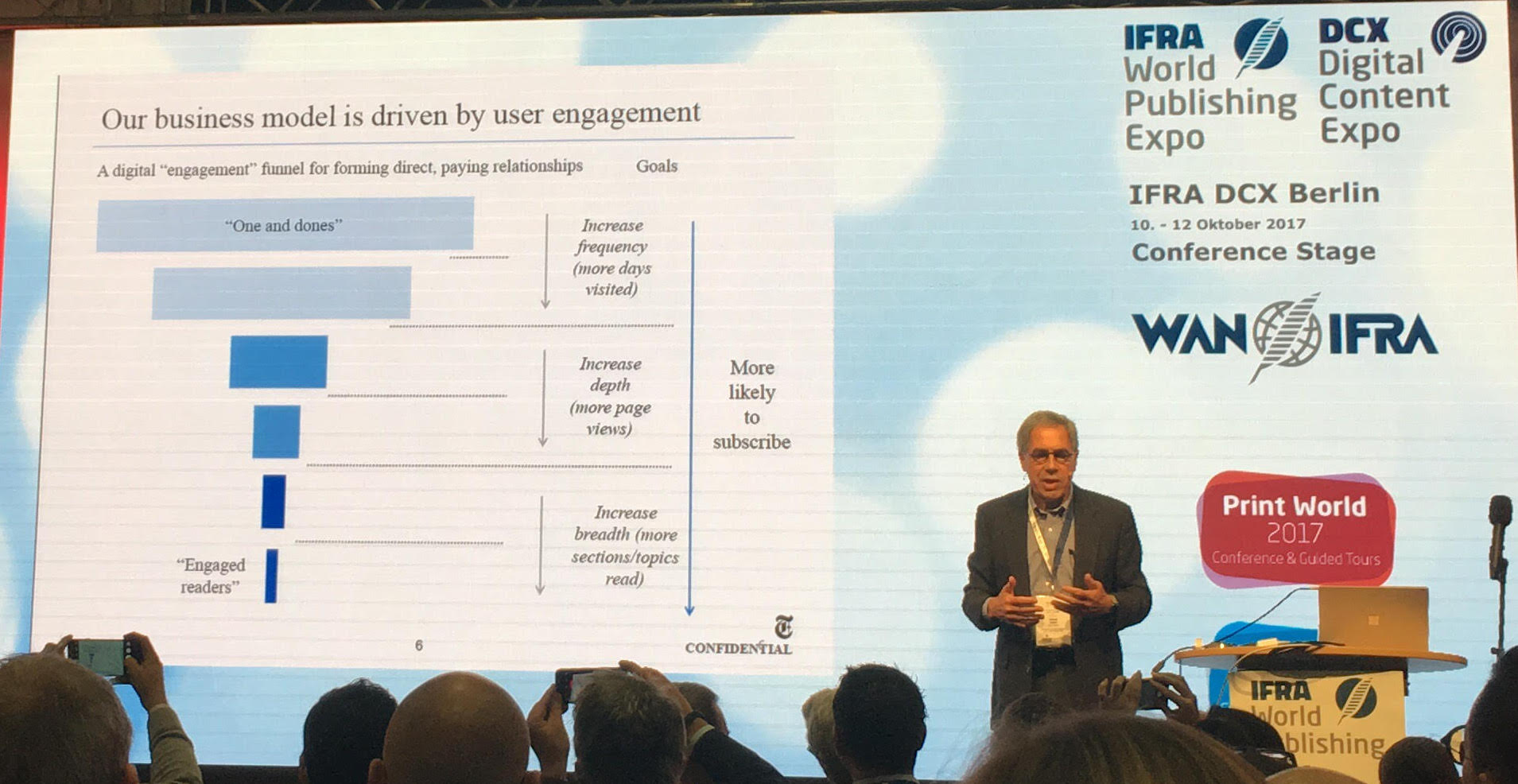This month, Better News was launched, providing resources for publishers in the digital news industry. This project, from the American Press Institute as part of the Knight-Lenfest Newsroom Initiative, aims to bring news organisations together with experts in technology to address the challenges, as well as opportunities, the artificial intelligence age brings.
One key resource is the list of the 7 “key essentials” for newsrooms in this digital age. This week we are highlighting the need of data for each essential, and looking at practical examples of how digital innovators have implemented these essentials in their newsrooms.
1. Be audience-first
Publishers need to focus on targeted audiences with particular needs and interests that they can address better than competitors. It is not mobile-first or digital-first publishing that will drive engagement, but instead audience-first publishing. To be successful, publishers need to fulfil the expectations of their audience and then organize their work processes to follow.
 For instance, if your target audience are “news lovers”, who want to read the news multiple times a day, then it is important to ensure that your stories are quickly published in stackable formats. On the other hand, if your audience is mostly “daily briefers”, who prefer well-structured content with a beginning and end, then the newsroom processes need be adjusted accordingly.
For instance, if your target audience are “news lovers”, who want to read the news multiple times a day, then it is important to ensure that your stories are quickly published in stackable formats. On the other hand, if your audience is mostly “daily briefers”, who prefer well-structured content with a beginning and end, then the newsroom processes need be adjusted accordingly.
Accurate data on this targeted audience is key for creating relevant content that activates engaged readers. We observed this in our community of customers as well, with publishers being able to analyze the engagement generated by daily editions in different reader segments.
ProPublica knows the audience is key, with Engagement Editor Terry Parris remarking:
It’s not the size of the community that matters. It’s about finding the right one.
Terry Parris
2. Embrace platforms
News organisations need to be meeting their audience where they are, not expecting audiences to come to them. That means that publishers should be on the platforms used by their targeted audiences; in this growing digital world, this often means on mobile. Michael Golden, president of The New York Times, recently explained that all of their growth is driven by mobile.

Offering a print edition on mobile is a good start, however it is also important to take advantage of the opportunities mobile offers as well. The Economist took this lesson to heart with their Espresso edition, designed for their busy readers to read on the go each weekday morning. They offer a brief, clear version of top stories so readers can quickly be informed each morning, which ensures readers can easily make the Espresso part of their daily routine.
Another exemplification of this lesson is Le Monde, with their Snapchat Discover team, which creates content for the messaging app every day. This new format with a younger audience allows them to adapt their content offering, focusing on topics for millennials that are not covered as in depth in print or on their website.
3. Publish at the conveniences of the audience, not the newsroom

In the print age, newspaper editions were published each morning. But this doesn’t mean that was when the editions were actually being read. The same is true in the digital age.
Suki Dardarian, managing editor at the Minnesotan Star Tribune newsroom describes when their newsroom had this realisation:
One of the most amazing charts that we put together was: when are we posting stories and when are people coming to our site. We graphed these two against each other, and they are not at all synced up.
Suki Dardarian
Ouest-France has also addressed this issue, with their creation of L’édition du Soir, a digital-only evening edition that utilizes the time readers have while commuting home or relaxing after work.
4. Funnel occasional users to loyal readers
Readers beginning as occasional users should be guided through the stages of increased reader engagement, first increasing their usage, then to paying for the content, and finally to loyal readers who recommend the content to others. The New York Times president Michael Golden emphasised the need to focus on this funnel, stating:
Every engaged reader first started as an occasional reader.
Michael Golden
This can be achieved through the use of data, artificial intelligence, and technology such as EngageReaders which highlights hidden gems that readers loved. Improved placement of similar hidden gem stories can help to create a more engaging offering.
Loyal readers can also be developed through the creation of membership programs. By building a sense of community amongst readers and the news brand, readers can be activated to become larger supporters, financially as well as in terms of referrals.
5. Experiment with different monetisation models
There are many potential sources of revenue for news organisations, and publishers should look to diversify their sources. A good starting point are the six revenue sources readers find acceptable: membership programs, news bundles, soft paywalls, hard paywalls, display ads, and e-commerce.
6. Partner and collaborate
The Center for Cooperative Media at Montclair State University’s School of Communication and Media has studied the rise in cooperation among news entities and found that it has “evolved from experiment to common practice”. One such example is “The Reentry Project”, a collaboration between Philadelphia news outlets to cover the reentry of prisoners into society, which drives traffic to the websites of partner organisations.
Twipe has had success with collaborations as well, with our Google DNI project EngageReaders, which was developed in partnership with Mediahuis.
7. Appoint “mini-publishers”
Create a strong sense of ownership and accountability by developing cross-functional “mini-publisher” teams. Such teams have an expanded scope of responsibilities, going beyond content creation to include revenue generation and brand development, and help to drive audience growth and profitability.
Embrace data in your decision-making
One missing essential is the need to embrace data in your decision-making. Data, and the analysis derived from it, are important for newsrooms in order to make informed decisions that will lead to success in the digital age. In this time of artificial intelligence, data is key for success.
These 7 key essentials are a big part of thriving in the digital age, but truly successful digital newsrooms take it a step further through continuous innovation and experimenting with what works for them and their audience.
This article was written by Mary-Katharine Phillips, Media Innovation Analyst at Twipe from 2017 – 2021.

